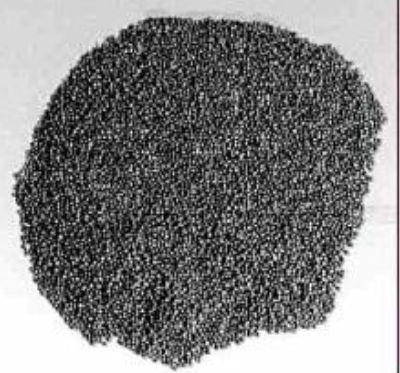Low Carbon Steel Balls
Low carbon steel balls are produced using very well selected low carbon scrap with very low sulfur and phosphorus content. As a result, after being melted in induction furnaces at 1600-16500 and cooled in water after atomization, they have a bainitic microstructure and are obtained as crack-free grains. Also, no heat treatment is applied.
Why Low Carbon?
- Low carbon and high manganese steel balls have high impact absorption capacity. The impacts are distributed homogeneously all over the ball.
- During sandblasting processes, low carbon ball grains are peeled off in thin layers like an onion for 80% of their life due to abrasion, and they break down into small pieces only due to material fatigue. Machine and blade wear is also significantly reduced as it is broken down into fewer and smaller parts.
- Due to the cracked structure formed during the production of high carbon steel balls, they are broken into large and angular pieces in a short time. With this feature, the machine also causes high extra costs on turbine equipment and filters.
- Surface cracks are not seen in low carbon ball like in high carbon ball. Cracks reduce the life of the ball.
- Low carbon steel shot hardens up to 46-49 HRC after the first few cycles inside the shot blasting machine due to its high manganese content. Therefore, it has a better cleaning effect than carbonaceous.
Due to all these features, low carbon steel balls have a 20% longer life than high carbon ones, as various test devices show.
Low carbon steel balls show excellent performance in rust, oxide and sand removal processes, deburring, surface preparation and stress relieving (shot peening) processes with their long service life and high hardness. Ideal for use in foundries, steelworks, forgings and rolling mills, machine building, steel industry, automotive, shipbuilding, aircraft and structural steel industries. |



